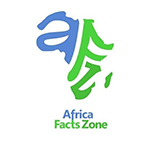Ancient Civilizations of Africa and African Empire

Learn about seven Ancient Civilizations of Africa that left their impact on history, from the prehistoric Sudan to the medieval Zimbabwe.
Ancient Civilizations of Africa
1. Ancient Civilizations of Africa: The Kush Kingdom
The Kingdom of Kush is one of the Ancient Civilizations of Africa and remained a regional power in Africa for more than a thousand years, despite being frequently eclipsed by its Egyptian neighbors to the north.
The ancient Nubian empire peaked in the second millennium B.C., when it reigned over a sizable portion of the present-day Sudan along the Nile River.
Nearly all information about Kush comes from Egyptian sources, which suggests that it was a bustling commercial hub with a thriving market for gold, ivory, incense, iron, and other precious metals.
The kingdom absorbed many of its neighbor’s practices and was both a commercial partner and a military adversary of Egypt, even ruling Egypt during the 25th Dynasty.
The Kushites erected their own varieties of pyramids, mummified their dead, and worshipped some of the Egyptian gods.
More than 200 pyramid ruins—more than there are in the all of Egypt—can be seen in the vicinity of the former Kushite city of Meroe.
2. The Punt Land
The Punt culture is one of the most enigmatic in Africa and one of the Ancient Civilizations of Africa . In Egyptian records, the kingdom is described as a “Land of the Gods” rich in ebony, gold, myrrh, and exotic creatures like apes and leopards.
Historical reports of the empire date to circa 2500 B.C. During Queen Hatshepsut‘s rule in the 15th century b.c., the Egyptians are known to have dispatched massive flotillas and caravans on trade trips to Punt, although they never pinpointed its location.
The location of the mythical kingdom is currently a contentious subject among academics.
Although the Arabian Peninsula and the Levant have been suggested as prospective options, the majority of people think it existed somewhere around the East African Red Sea coast.
A group of experts made an attempt to identify Punt in 2010 by examining a mummified baboon that its rulers had previously given to the Egyptian pharaohs.
Despite the fact that their findings indicated that the bones most closely resembled animals discovered in contemporary Ethiopia and Eritrea, the exact location of the Land of Punt is still unknown.
3. Carthage
Carthage, best remembered as Rome’s foe in the Punic Wars, was a prosperous North African trade center for more than 500 years.
The city-state was originally a Phoenician town in what is now Tunisia in the 8th or 9th century B.C., but it subsequently expanded into a vast nautical empire that controlled commerce in textiles, gold, silver, and copper.
At its height, the nation’s capital city had almost 500,000 residents and a protected port with 220 ship docking berths.
Eventually, Carthage’s power spread from North Africa to Spain and portions of the Mediterranean, but its desire for growth caused it to clash more frequently with the developing Roman Republic.
Three violent Punic Wars between the ancient superpowers, which began in 264 B.C. and concluded in 146 B.C. with Carthage’s nearly complete devastation.
Today, Tunis is home to a number of ruins that are essentially all that’s left of the once-powerful empire.
Also Read: Hannibal Barca of Carthage (Tunisia) One of the Greatest Military Strategist in History
Hannibal Barca of Carthage (Tunisia) One of the Greatest Military Strategist in History
4. The Aksum Kingdom
The powerful Kingdom of Aksum ruled over portions of what are now Eritrea and northern Ethiopia during the time when the Roman Empire rose and collapsed.
Surprisingly little is known of Aksum’s early history, but by the second and third century A.D.
It had become a commerce powerhouse, connecting ancient Europe and the Far East with its wealth of gold and ivory.
One of the earliest recorded languages in Africa, Ge’ez, was used by the kingdom. It also had a particular architectural style that included the construction of enormous stone obelisks, some of which were over 100 feet tall.
A political and armed relationship with the Byzantines resulted from Aksum’s adoption of Christianity as one of the world’s first empires in the fourth century.
The Ethiopian Orthodox Church, which was the kingdom’s religious heritage, still survives today. The empire eventually fell into disarray somewhere in the 7th or 8th century.
5. The Mali Empire
The Mali Empire is one of the Ancient Civilizations of Africa and was established in the 1200s when a leader by the name of Sundiata Keita, often known as the “Lion King,” launched an uprising against a Sosso king and brought his people together to form a new kingdom.
The empire expanded its commerce network and strengthened control over a significant area of West Africa under Keita and his successors.
Its two most significant cities, Djenné and Timbuktu, were noted for their ornate adobe mosques and Islamic educational institutions.
Sankore University in Timbuktu was one such establishment, and it included a library with an estimated 700,000 manuscripts.
The Mali Empire finally fell apart in the 16th century, but when it was at its height, it was one of the jewels of the continent of Africa and was renowned all over the world for its richness and splendor.
One fable about the kingdom’s wealth is about the monarch Mansa Musa, who stopped in Egypt on his way to Mecca in the fourteenth century.
Contemporary records claim that Musa gave out so much gold during the visit that it fell in value in Egyptian marketplaces for a number of years.
Also Read: Mali Empire – The Rise and Downfall of the Malian Empire
6. The Songhai Empire
Few states in African history can match the Songhai Empire in terms of size.
This West African kingdom, which was larger than Western Europe at the time and included portions of a dozen contemporary countries, was founded in the 15th century from some of the old Mali Empire’s provinces and was one of the Ancient Civilizations of Africa.
Due to aggressive trade practices and a complex bureaucratic structure that divided its enormous possessions into many provinces, each with its own governor, the empire experienced a time of prosperity.
It peaked in the early 16th century during the reign of the pious King Muhammad I Askia, who expanded Timbuktu with the aid of Egypt’s Muslim Caliph and founded hundreds of Islamic schools.
The Songhai Empire was once one of the most powerful nations in the world, but it fell in the late 1500s as a result of internal struggle and a period of civil war that left it vulnerable to an invasion by the Sultan of Morocco.
7. The Great Zimbabwe
The Great Zimbabwe, a massive complex of piled boulders, stone towers, and defensive walls constructed from cut granite stones, is one of sub-Saharan Africa’s most magnificent monuments.
The rock citadel has been the subject of myths and stories for a very long time; it was formerly believed to be the home of the Biblical Queen of Sheba, but scholars today recognize it as the capital of an indigenous empire that flourished in the area during the 13th and 15th centuries.
This kingdom possessed a sizable portion of what is now Botswana, Zimbabwe, and Mozambique.
It was notably wealthy in precious metals and animals, and it was situated alongside a trade route that connected the area’s gold mines with ports on the coast of the Indian Ocean.
The ruins of objects like Chinese ceramics, Arabian glass, and European fabrics show that it was once a well-connected trade city, despite the fact that nothing is known about its past.
In its height, the fortified city in the Great Zimbabwe was home to an estimated 20,000 people. However, it was mysteriously abandoned sometime in the 15th century after the kingdom’s fall.
8. The Mutapa Kingdom in Africa
Located throughout what are now Lesotho, Mozambique, South Africa, Swaziland, Zambia, and Zimbabwe between 1430 and 1760 CE
From the Limpopo and Zambezi Rivers to the Indian Ocean coast, the Mutapa Empire ruled over an incredibly large area of Southern Africa.
If it still existed today, its vast area would cover portions of six countries in Southern Africa. According to legend, the Kingdom of Mutapa was founded by a warrior prince from the Kingdom of Zimbabwe.
Within a generation, Mutapa surpassed Great Zimbabwe and its surroundings in terms of splendour.
In an effort to regulate commerce in the area, the Portuguese unintentionally acted as a middleman between India and the minor kingdoms of the Mutapa.
Rumors that the monarch of Mutapa owned King Solomon’s mines from the Bible further stoked interest in the area.
With such sway, the Kingdom of Mutapa demanded a subsidy from each captain who assumed command in Portuguese Mozambique and levied a 50% tax on all imported items for commerce.
Sadly, factional strife started the kingdom’s collapse at the start of the 17th century. This provided the Portuguese with the chance to establish Mutapa as a vassal state.
Also Read: Sub-Saharan Africa: History, Geography, Politics and Racist Undertone
Sub-Saharan Africa: History, Geography, Politics and Racist Undertone
9. The Empire of Ethiopia
Located in various regions of what is currently Eritrea and Ethiopia
between 1137 and 1975 CE
The Ethiopian Empire, also known as Abyssinia, was the longest-lasting African country and one of the Ancient Civilizations of Africa , ruling from the Middle Ages all the way up to the Cold War.
It has endured some of the most turbulent times in recent history. It withstood several foes that tried to invade its area, including the Ottoman, Italian, and Egyptian troops. Its leaders, according to legend, are decedents of King Solomon.
Ethiopia successfully resisted and beat Italy in the First Italo-Ethiopian War during the Scramble for Africa, when European powers consolidated colonial rule over African regions.
The Second Italo-Ethiopian War, which Italy lost in 1935, marked the start of the empire’s downfall. A military junta eventually ended the monarchy in 1974.
Ethiopia’s Dawit II, emperor and member of the Solomonic dynasty (a dynasty who claim to be descendants of King Solomon and the Queen of Sheba).
10. The Kongo Kingdom in Africa
Located in regions of what are now Angola, the DRC, Gabon, and the Republic of the Congo
between 1390 and 1914 CE
The modern-day nations of the Democratic Republic of the Congo and the Republic of the Congo were both formerly a part of the Kingdom of Kongo, which existed before European forces split the African continent during the Scramble for Africa.
This empire ultimately reached into both the contemporary Congos and Angola, however its exact borders are still unknown.
The leadership of a Kikongo warrior named Luken Lua Nimi was responsible for this period of growth. It ruled central Africa for centuries thanks to its strength in politics and the military.
The quasi-feudal Kongolese society’s economy was supported by trading routes that followed the area’s rivers and dealt in textiles, ceramics, copper, and ivory.
11. The Benin Empire
Between around 1180 and 1897 CE
Before being annexed by the British Empire, the Benin Empire, which was based in present-day Nigeria, was regarded as one of the oldest, most advanced empires and Ancient Civilizations of Africa. Ivory, bronze, and iron were used to create masterpieces by renowned artists.
The Portuguese and the Benin Empire engaged in extensive trade. They traded Manilla, a sort of money used in West Africa, and weapons for palm oil, pepper, and ivory. In the 16th century, an ambassador even traveled to Lisbon as a result of the alliance.
The first British mission to Benin took place in 1553. Throughout the 16th and 17th centuries, there was a prosperous economic relationship, but Benin began to feel that Britain was gaining control.
Numerous accounts of Benin’s splendor, riches, and intellect were carried back to Europe by Dutch, British, and Portuguese explorers.
Also Read: The Benin Empire
12. The Commonwealth of Ghana
Located in regions of what are currently Mauritania, Senegal, and Mali
when? between 700 and 1240 CE
This African nation, more often known as Wagadu, served as a significant halt on the trans-Saharan trade route that linked the Sahelian communities to the Mediterranean Sea coast markets and the trans-Saharan gold trade.
The largest city south of the Sahara Desert was Koumbi Saleh, notwithstanding the country’s rumored several capital city changes.
Between 15,000 and 20,000 people called it home during its busiest point—a remarkable number for a city with a meager water supply.
They were experts in the trade of kola nuts and gold (the latter of which became the secret ingredient in Coca-Cola centuries later).
When Ghana joined the kingdom of Mali about the year 1240 CE, the collapse of the Ghanaian monarchy was furthered.
Also Read: History of the Asante Kingdom in Ghana
13. Oyo Empire
In the 1300s, the pre-colonial kingdom of Oyo was established in modern-day Nigeria. Oyo, one of the most powerful republics in the Yoruba-speaking area, was founded by Oranmiyan of the Yoruba people of West Africa.
This early 1500s small state, which had its center at Oyo-Ile, had by 1550 conquered two nearby kingdoms, Borgu and Nupe, to become the most powerful political force in the area.
An alafin (king) who shared authority with the Oyo Mesi, aristocratic rulers from each of the city’s seven wards, governed Oyo.
The choice of the alafin was made by the Oyo Mesi. In addition, if an alafin misused his authority, they may order his suicide.
Oyo moved southwestward to the Atlantic coast under Alafin (King) Obalokun, joining the Atlantic Ocean trading network.
Also Read: History of the yoruba tribe of Nigeria
Slave Trade
Oyo was able to earn much-needed foreign currency through primarily trading in slaves.
Under Alafin Ajagbo, Oyo continued to grow westward over the seventeenth and eighteenth centuries, growing into a significant empire but never conquering all Yoruba-speaking peoples.
Oyo significantly increased its militarization and reorganized its cavalry and infantry in the sixteenth century in reaction to invasions by the Nupe people.
The cavalry eventually served as the army’s core. Oyo was able to get horses for its cavalry from Europe and North Africa because to its Atlantic ports.
Oyo’s prosperity from trade, particularly slave trade, sparked discussions over the future of the monarchy.
Some alafins want the money for extravagant expenditure, while others wished to sustain the army and increase the state’s territory.
Civil wars resulted from these conflicts as contenders fought for control of the kingdom and Oyo’s sizable coffers. Alafin Abiodun (1754–1789), who limited the army’s influence, put a stop to this period of internal struggle.
The Kingdom of Oyo fell rather quickly. The Oyo army was allowed to collapse by Abiodun, who was more interested in lavish displays of royal riches than anything else.
In turn, this made it possible for weaker periphery states to elude Oyo’s rule. Dahomey, one of the states in the southwest, quickly developed into a political and military foe.
The Muslim-led Fulani Jihad that took place on Oyo’s northern border had an impact as well. These provinces also attained independence eventually.
Beginning in the first decade of the 19th century, Oyo lost control of lucrative trade routes that had previously been a significant source of state income.
The Oyo kingdom had fallen by 1837.





